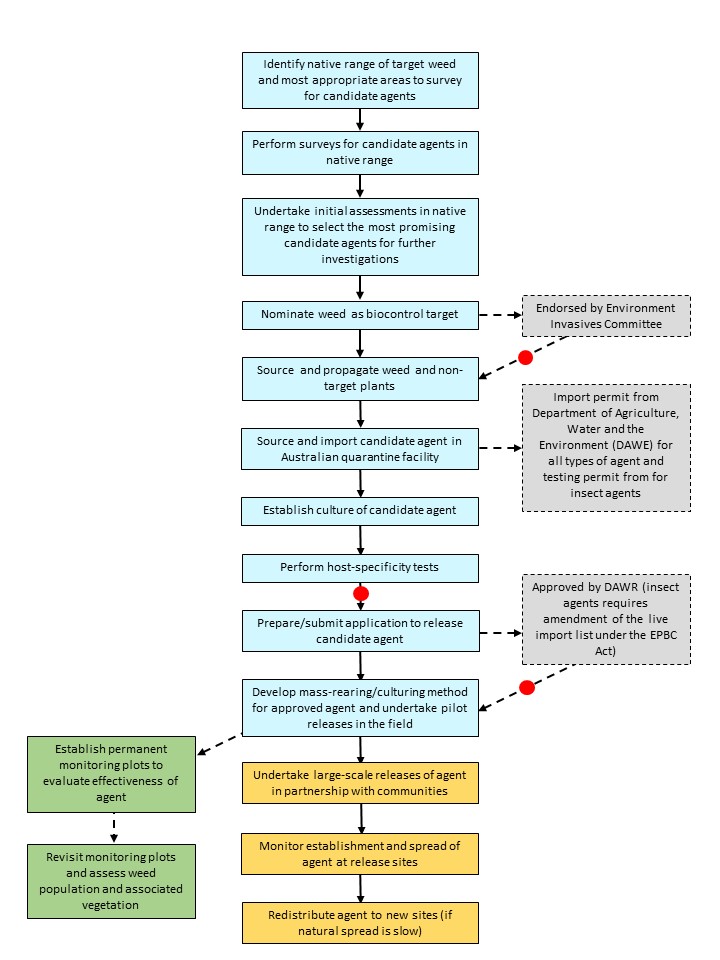Background
Classical biological control (biocontrol) involves the deliberate introduction of host-specific natural enemies of a target weed from its native range into the region where the plant has become a problem. It is the only feasible management option for invasive environmental weeds at the landscape scale, which protects and improves biodiversity and natural ecosystem services. Effective biocontrol agents do not eradicate the target weed, but rather suppress populations to the point that they are less competitive with native species and impose less of a negative impact on the ecosystem.
Following recommendations from a review of weed management in NSW by the Natural Resources Commission in 2014, the NSW Environmental Trust (hereafter ‘the Trust’) decided to invest in biocontrol research for priority environmental weeds in NSW. A partnership between the Trust and a consortium comprising the CSIRO, NSW Department of Primary Industries and NSW Department of Planning, Industry and Environment (formerly referred to Office of Environment and Heritage), was established to scope a project, which was approved by the Trust’s Board in May 2016.

Riparian ecosystem infested by blackberry and willows in NSW.
For this project, the general definition of an environmental weed is:
A species that invades and/or impacts on native communities and ecosystems. This might be through competing for resources; prevention of recruitment; alteration of geomorphological, soil, fire or hydrological processes; genetically modifying local native plants; or those that cause changes to fauna populations or geography.
The project’s overarching goal is ‘To reduce the impact of weeds on the NSW environment through the selection and deployment of appropriate and effective biocontrol agents’. The intent is to extend on existing successful biocontrol research, undertaken in Australia or elsewhere, which focuses on new classical biocontrol agents with potential to provide long-term solutions for specific environmental weeds in NSW. The project does not, unless under exceptional circumstances, undertake explorations for candidate biocontrol agents in the native range or research on endemic natural enemies of weeds with potential for biocontrol use. It rather concentrates efforts on already identified promising candidate agents from the native range that have potential for use in NSW but require additional research to demonstrate their safety before an application for their release in Australia can be submitted to the relevant authorities.
The project comprises different components, which capture the key steps of biocontrol programs (see below):
- Development of a framework to prioritise weed targets for biocontrol research, and its implementation and regular reviews and updates.
- Research into new candidate biocontrol agents to gather the necessary information to support applications for release in Australia.
- Release and evaluation of new agents approved for release in Australia.

Schematic of all the steps involved in a typical biocontrol program. Host-specificity tests are sometimes performed in the native range, but it can be a challenge for another country to import Australian native plants to another country. Blue boxes = activities that are the responsibility of the research provider; Yellow boxes = activities that involve engagement from communities members; Green boxes = activities to quantitatively evaluate the impact of the biocontrol agent, typically involving the research provider who was responsible for the release of the agent; Grey boxes = the different approvals required from Australian regulators. The red dots represent possible ‘stop points’ where further work could be deemed unnecessary based on outcomes of the previous step.


